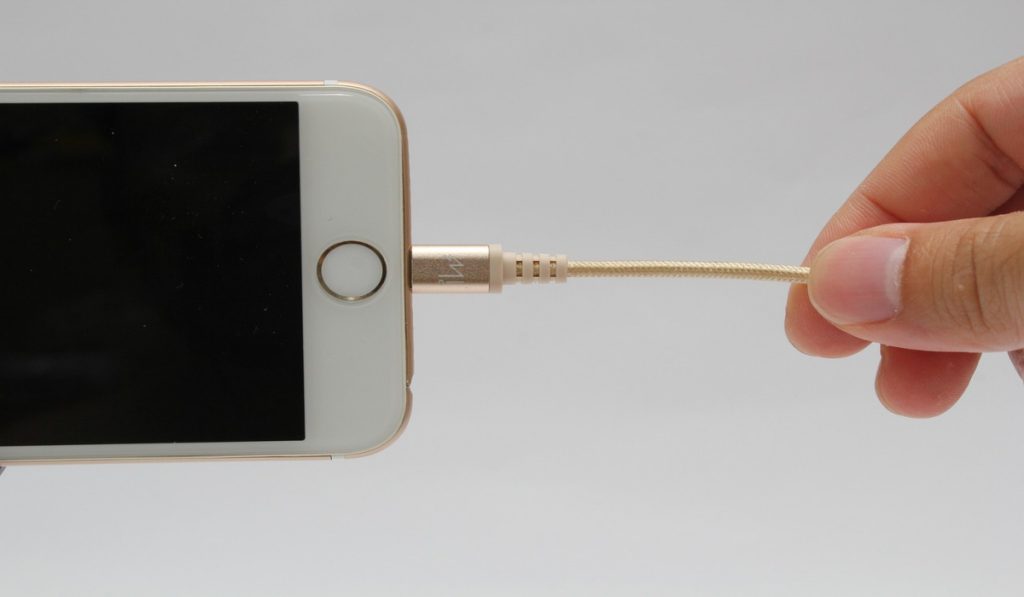iPhone users enjoy a lot of functionality, but like every other device, iPhones still need a good charge to function successfully. As such, if your iPhone charger ever gets damaged, it’s normal to want to replace it with a new one immediately. However, this may not always be necessary, especially if you know how to fix a broken iPhone charger cable.
In this guide, we’ll show you how to fix a broken iPhone charger cable. Try this as the first solution before you consider buying a new one. Make sure to pay close attention and follow the instructions we’ve provided properly.

What Do I Need to Fix a Broken iPhone Charger Cable?
You’ll be needing some instruments in hand if you have decided to fix a broken iPhone charger cable by yourself.
We’ve listed them below:
- Cutting nippers: You’ll need this to remove the charger’s cover.
- Electrical tape: This is needed to cover exposed wires, insulate connections, and guard against dampness or dust, both of which can cause further harm.
- Soldering iron: This is used to melt and connect metal components together. It can also be used to mend any wire breaks.
- Wire cutter: This is for cutting away any broken or frayed wire.
- Safety equipment: It’s critical to stay safe while fixing the faulty charger.
- Multimeter: You’ll need this to monitor electrical current, discover any problems inside the charger, and pinpoint the specific location of the problem.
Once you’ve gotten all these ready, you can proceed to the instructions below to fix a broken iPhone charger cable.
How Do I Fix a Broken iPhone Charger Cable?
Take note of the following instructions to fix a broken iPhone charger cable:
Step 1: The first step in trying to fix a broken iPhone charger is to identify the problematic component of the charger. If you can’t see the broken part directly, a multimeter can help you figure out what it is. When testing the charger wire with a multimeter, it is critical to first identify the positive and negative leads.
Lay the positive lead atop the metal connector at the wire’s end and the negative tip on the exposed wire. When everything has been set in place, switch the multimeter to the “continuity” mode. If the multimeter beeps, it means there is continuity and the wire is not severed. Without continuity, the cable is faulty and must be repaired.
Step 2: Using a sharp knife or cutting nippers, carefully cut the cable’s outer rubber case off. Take care not to cut too deeply, as this could harm the wires within. After removing the rubber, the wires should be visible.
Examine the damaged cables and try to wrap each wire around itself until a tight coil forms. After all three wires have coiled, secure them with electrical tape. You can solder them together if rotating them around doesn’t work.
Step 3: A soldering iron, solder, and flux are required to solder the wires together. Begin by applying soldering flux to the wire ends and heating them with the soldering iron until the flux bubbles. Next, apply the solder to the heated wires and spread it evenly between them. Finally, allow the joint to cool before checking it.
Step 4: The next step in trying to fix a broken iPhone charger cable is to insulate the wires with electrical tape because it is critical that they are not exposed. If they are, they risk shorting out and catching fire. You can use ordinary duct tape for various types of wire.
The main thing is to apply the tape tightly so that there are no gaps. Water or other liquids can leak in through holes and cause corrosion. To protect the wires, you also need to use shrink tubing.
Step 5: Shrink tubing is an excellent technique to preserve your wires and keep them from becoming tangled when trying to fix a broken charger cable. Shrink tubing is a form of plastic tubing that can be wrapped around wires and then shrunk down with heat to create a snug fit that keeps the wires in place and prevents them from moving.
This not only keeps your wires orderly, it also saves them from friction damage. To use the tubing, simply glide it over your wires and shrink it using a heat gun or hair dryer.
In summary, as long as you follow all these instructions correctly, you’ll be able to fix a broken charger easily. If you’re not entirely sure you can do this yourself, you can consult a repairer to provide some helpful insight. Finally, if you’d rather not fix the charger cable, you could just buy a new one.

